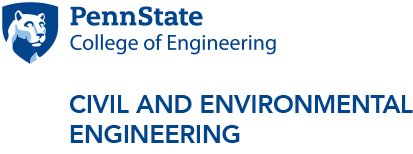
Water Resources Engineering and Science
Water Resources is a sub-discipline of civil and environmental engineering. All graduate students interested in water resources engineering and science should apply to the Department of Civil and Environmental Engineering. Water resources engineering and science includes:
- Hydraulic engineering
- Hydrology and all sub-disciplines
- Data science and machine learning
- Water resources systems analysis
- Sediment transport and geomorphology
- Environmental fluid mechanics
- Stormwater management
- Climate adaptation and decision-making under uncertainty
- Nature-based solutions
- Human dimensions of engineering and infrastructure resilience
- Water governance, policy, ethics, and equity
Common to all of these areas of study is the goal of understanding the biophysical, technical, and social processes responsible for the distribution and management of water in natural and engineered environments. In a world of ever-increasing connectivity and accelerated change, our relationships with the water environment surrounding us are of increasing significance. Our graduates tackle challenges associated with the analysis, design and optimization of hydraulic structures and nature-based and engineered water infrastructure, and to manage, preserve and enhance water resources in natural and engineered environments across temporal and spatial scales, from rivers and watersheds to continents and the entire planet.
Research in the water resources engineering and science group covers a wide range of topics and uses a wide range of methodologies, including theoretical, experimental (lab and field), empirical, and computational. Detailed descriptions of research projects are available on individual faculty members' websites. A short description is included below for reference.
Faculty
Roberto Fernández: Dr. Fernández’s research focuses on ways in which flowing water interacts with the built environment and shapes the landscapes around us, specifically focusing on erosion. Prior to joining Penn State, Dr. Fernández worked as a Leverhulme Research Fellow at the University of Hull in the United Kingdom.
Christine Kirchhoff: Dr. Kirchhoff’s research focuses on environmental decision making, the human dimensions of infrastructure resilience, and water governance. With honors that include a National Science Foundation CAREER award, she is a contributing author to chapter six of the Intergovernmental Panel on Climate Change Working Group II Sixth Assessment Report—Cities, Settlements and Key Infrastructure. Prior to joining Penn State, Dr. Kirchhoff was the Castleman Professor of Engineering Innovation and associate professor of civil and environmental engineering at the University of Connecticut. Dr. Kirchhoff is a joint hire with the School of Engineering Design and Innovation.
Xiaofeng Liu : Dr. Liu’s research interest includes physics-based and data-driven modeling for environmental hydraulics. His group specializes in the development and utilization of computational models for problems in environmental and water resource engineering. Example research projects include flow and scour modeling around riverine and coastal structures, river restoration, water quality modeling, and fish passage design.
Lauren McPhillips: Dr. McPhillips’ research primarily explores hydrology and biogeochemistry in landscapes with substantial human manipulation, often urban and suburban landscapes. McPhillips is particularly interested in ecological engineering solutions, such as green stormwater infrastructure, that can help preserve or restore environmental integrity. The McPhillips research group leverages a variety of methods, primarily lab and field approaches, as well as geospatial investigations, data synthesis, and some modeling.
Alfonso Mejía: The Mejía research group is aimed at understanding the spatial and temporal interactions between water systems (watersheds, stormwater networks, reservoirs, levees, etc.) and other Earth (atmosphere, ecosystems, etc.) and human (cities, supply chains, crops, etc.) systems, using interdisciplinary methods and diverse data sources and models. The group is specifically interested in uncovering the emergent principles and rules behind these interactions and using those to help inform engineering policy and practice.
Cibin Raj: Our group focuses on computational ecohydrology. Research program integrates biophysical modeling, machine learning, optimization tools, and field research to improve the understanding of nutrient dynamics in watershed systems, quantifying ecohydrological impacts of climate and land use change, and developing environmentally sustainable, economically viable, and climate-resilient agricultural and urban systems with minimal impact on natural resources.
Chaopeng Shen: The Shen Multi-scale Hydrology, Processes, and Intelligence Group (MHPI) focuses on advancing fundamental understanding of the interactions between hydrology and other subsystems (e.g., ecosystem, energy and carbon cycles, solid earth and channels). Water scarcity and excess create varied conflicts and competitions in different parts of the world, and drastic changes in the water cycle put stress on natural and societal systems. Importantly, the changes in water states and flows are a significant driver for changes in other systems. The group strives to provide sound physical science, produced by data, data-driven and process-based models, to support decision-making across multiple scales, from catchment to global scales. The fundamental understanding of the hydrologic cycle, after decades of research, still remains much to be improved. The group strives to identify commonalities and learn underlying principles. Primary methods include (1) state-of-the-art machine learning (ML); and (2) physics-ML integration. The former through mining land-based and remotely sensed data, helps to efficiently generate hypotheses about how the system functions, while the latter allows the group to conduct experiments. Recently, we have focused on DL-based prediction of soil moisture, streamflow, landslides, and other variables. The DL has also manifested refreshingly strong predictive capability for many applications. To learn more about the integration of deep learning in water-related fields, read Dr. Shen’s argument, review, and opinions.



